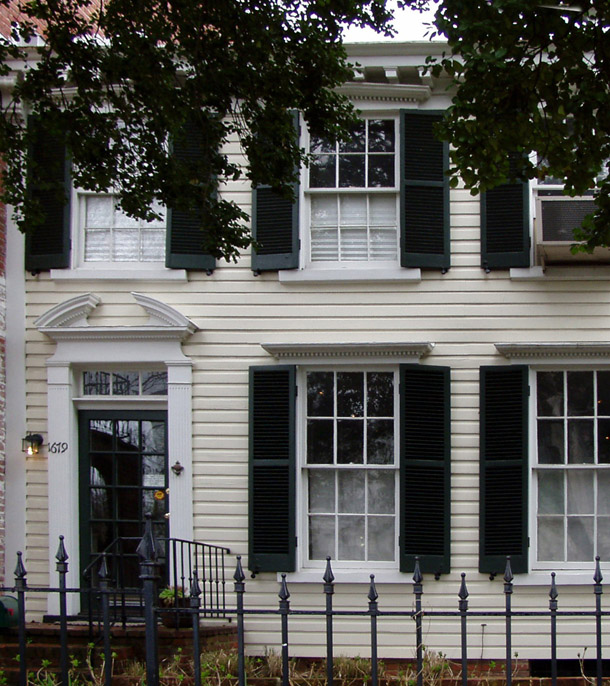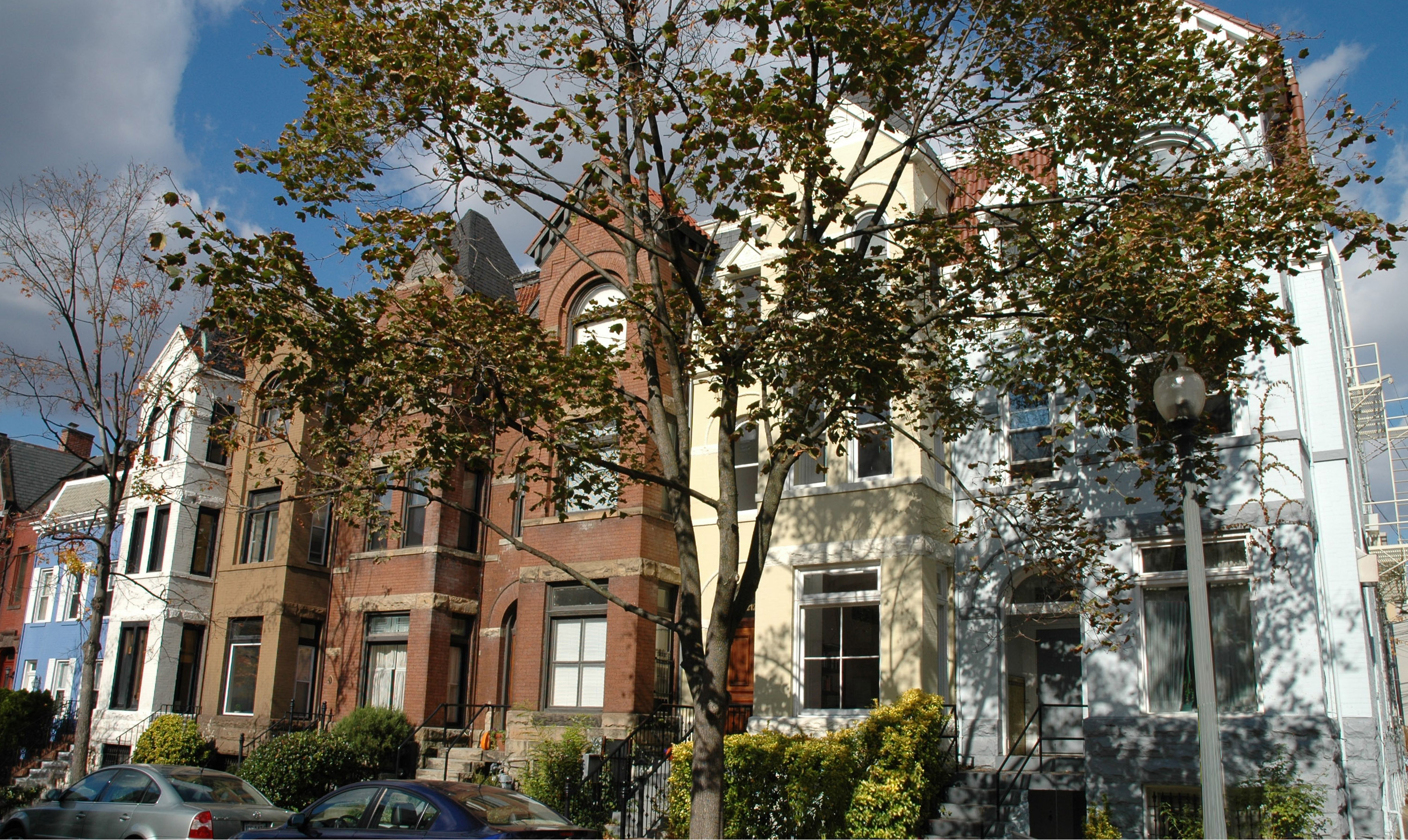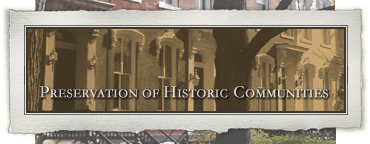View a Section
- Preservation of Historic Communities
- Donating an Historic Preservation Easement
- Incentive to Preserve
- Responsible Preservation
- Celebrating Architecture in our Nation's Capital
Preservation of Historic Communities

America’s past is brought to life by buildings and streetscapes in historic neighborhoods.
The exterior architecture of these neighborhoods gives us all a deeper understanding of the everyday lives of the people and the events that shaped our world. These living but architecturally intact neighborhoods let us experience history in a way that museums, monuments, and preserved mansions cannot.
A Gift for Tomorrow
The donation of an historic preservation easement protects the historic character of a property’s exterior for future generations. The owner can rest assured that he or she has contributed to the preservation of the community.
Property Owners Are Key
Preserving our visible history from destruction, decay and insensitive remodeling cannot be left to local government and civic groups alone. Though a property may be in a Federal historic district, the Federal government does not protect those districts; only local governments may enact preservation laws. Local preservation laws can and do change, exemptions to these rules are granted and enforcement can strain the capability of local government. Participation by individual property owners is key for success.
What is an historic preservation easement?
An historic preservation easement is your agreement to limit your right to change the exterior appearance of your property. While you retain title to the property and can change its interior, rent it, sell it, will it, or occupy it as you wish, the easement requires you to maintain the structural integrity of the building and obtain prior approval from the trust to make changes to the visible exterior of the building. This ensures that the building remains structurally sound and that any changes are consistent with the building’s original architectural style.
For more information, see the Section "Historic Preservation Easements"
Donating an Historic Preservation Easement
If you own an historic property (residential or commercial) Capitol Historic Trust, a non-profit group organized and qualified to hold easements, can let you know if your property might qualify and assist you with the donation process. For more information, see "I Want To Participate" or contact the Trust.
Incentive to Preserve
Since 1976, Congress has encouraged donation of ah historic preservation easement with a tax incentive. An owner of a historic property that donates an historic preservation easement to a qualified charitable organization (trust) may qualify for an income tax deduction for the value of the easement donation. The value of the donation is determined by a qualified, independent appraisal.
To qualify, a property must be located in a historic district designated on the National Register of Historic Places and must contribute to the historic significance of the district (or be listed individually on the National Register as an historically significant structure). References are:
Consult your tax advisor to see if the donation of a façade conservation easement makes sense for you.
Tax Code: IRC Section 170(h)
Regulations: Section 1.170A-14
Tax Form: IRS Form 8283
For more information, see Section "Tax Law Library". Also, be sure to refer to the Section "News & Issues" for the lastest information on the tax incentive, especially IRS challenges to the tax incentive.
Responsible Preservation
An historic preservation easement donation means that the property owner and the Trust work together to ensure that the property is protected and preserved for future generations. The easement donor will agree to seek the prior approval of the Trust to any changes in the exterior, and to maintain the exterior of the proerty and structural integrity of the building. The Trust will review all proposed alterations to the protected exterior of the building as well as ensure that the building is properly maintained. The Trust also visits each property annually to monitor its condition and ensure compliance with the easement. For more information on preservation obligations, see "Preservation Guidelines"
Celebrating Architecture in our Nation's Capital
 Streetscape of Calvin Thomas Stowe Brent Designs
Streetscape of Calvin Thomas Stowe Brent Designs
DC's First African-American Architect
Calvin Thomas Stowe Brent (1854-1899) was born in Washington, D.C., when slavery was still allowed by law, and free African-Americans were restricted to a few occupations. Architecture was not an occupation then open to African Americans.
Little is known about the early life and training of Mr. Brent, but it is known that his father, John Brent, was a slave who had purchased his freedom and that of his wife-to-be, Elizabeth Edmonton Brent. The elder Mr. Brent was a founder and the first pastor of one of the early independent Black churches in Washington. It is believed that, Calvin Brent learned his profession as an apprentice to the architect Thomas M. Plowman, designer of several major projects in the City and also the City’s Inspector of Buildings.
At the age of 22, Brent drafted the plans for Saint Luke’s Episcopal Church located at 1514 15th Street, NW. Over the next 25 years he designed buildings in all sections of the City, for middle-class African Americans and few White clients. Despite the pleas from the African-American community, the commissions from the wealthiest African-Americans and the most prominent Black Churches still went to white architects. Nonetheless Brent is known to have designed at least 82 houses, 2 stores and 6 churches, although all but 2 churches and 29 houses have been demolished in the city’s “redevelopment” efforts. The brick house designed as the family home at 18th and L Street, NW, remained in the family until it was demolished in 1947.
Brent’s designs typically were 19th-century traditional brick row houses of 2 or 3 stories with a bay-front. Still standing is a handsome group of 9 row houses, adorned with oriel windows and stone trim, at 4th and E Street, NE, in the Capitol Hill Historic District. Brent designed the houses for African-American developer William A. Stuart in 1889.
Brent died suddenly in 1899 at the age of 49. He is remembered as a pioneer in a profession previously closed to non-whites. He took advantage of the window of opportunity open for the first time, and successfully pursued his profession despite economic recession and anti-black prejudice, and despite the fact that he was the only African-American architect practicing in Washington until the early 20th century.
Source: Wilson, Dreck Spurlock (ed), African American Architects: A Biographical Dictionary 1865-1945, Rout ledge (publisher), 2004, at pp. 57-60.


